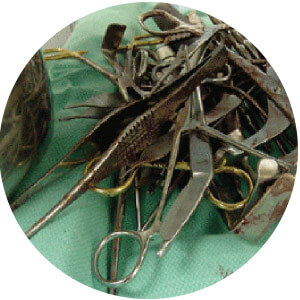Cost-saving
To assess the total cost of using single-use disposables, procurement personnel need to take into consideration more than the initial purchasing costs.
By looking at the different processes that both reusable and single-use instruments have to go through in order to be fit-for-purpose, the cost savings become clear.

Research collected by DTR Medical’s clinical consultations shows that the costs of reprocessing vary. Some reusable instruments can cost as little as £1 to reprocess with their disposable equivalent also costing the same. The question we pose to clinicians is why take risks with cross-contamination and potential time delays if there is no differentiation in price?
There are other less tangible costs which are not always understood, but which are very important to consider when discussing cost savings:
- The typical cost of repair for an instrument is £50 and single-use instruments rule out this cost
- Expensive and fine precision instruments are at greatest risk of damage, and incur the largest financial losses
- Busy clinical units need multiple sets of instruments to cope with high patient numbers which can put pressure on the capital costs of new reusable equipment
- Reusable instruments can put patients at risk of healthcare acquired infections (HCAIs), such as surgical site infections (SSI)
- Disposing of instruments after one use may seem like a waste of resources but when compared to the costs and energy used to reprocess reusable products, the savings speak for themselves.


In 2010 alone, a hospital in Wales and two north of London had to interrupt surgery schedules after discovering traces of contamination on instruments that had been out-sourced for reprocessing1.
1 Western Mail, June 4 2010, ‘Operations cancelled over ‘dirty’ surgical instruments’.
